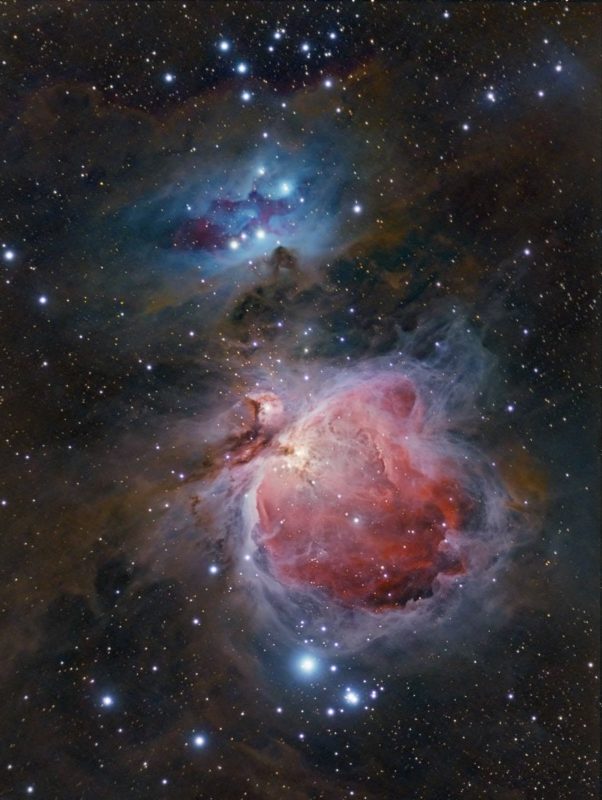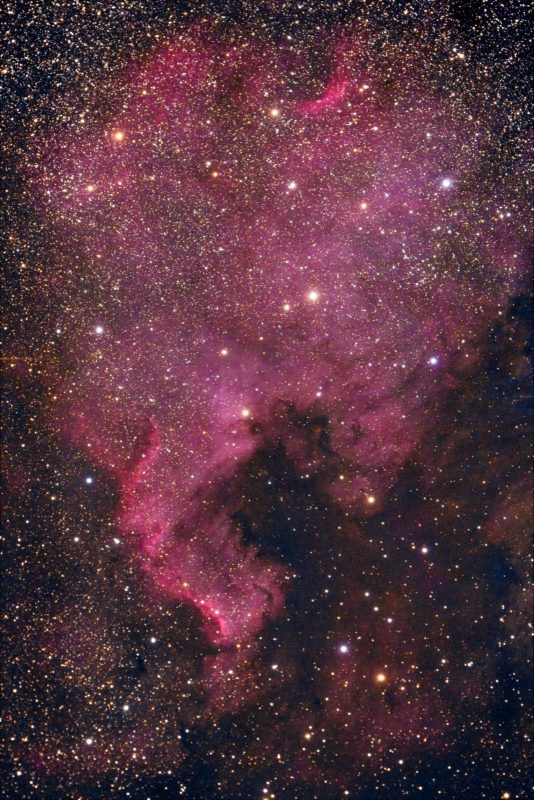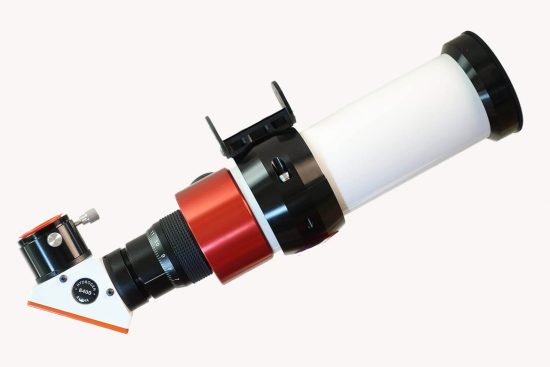6 Best Telescopes for Astrophotography in 2024

Whether you’re a seasoned photographer or just starting out, choosing the best telescope for astrophotography can be difficult.
Astrophotography is a fascinating hobby that allows you to capture stunning images of the night sky, and using a good telescope can change the way you photograph stars, planets, and other celestial objects.
However, with so many different telescopes on the market, it can be challenging to know where to start.
Read more: How to Take Photos of the Night Sky Through a Telescope
Features of the best telescope for astrophotography
Here are some things to consider when choosing a telescope for astrophotography.
1. Aperture
The aperture size of a telescope (usually noted with D) is one of the most important factors to consider when choosing a telescope for astrophotography and astronomy in general.

The aperture is the diameter of the main lens or mirror of the telescope, and it determines how much light the telescope can gather. The more light that is gathered, the clearer and more detailed the image will be.
2. Focal length
Focal length (f) is the distance from the main lens or mirror of the telescope to the point where the light is focused.
A longer focal length will result in a higher magnification, which can be useful for observing small celestial objects like planets, globular clusters, and planetary nebulae.

Long focal length telescopes are also great for photographing details on the Moon or the Sun. However, longer focal lengths also have a narrower field of view, which can make it harder to frame extended deep-sky objects.
Read more: A Beginner’s Guide to Deep Sky Photography
3. Focal ratio
The focal ratio of a telescope (f/ or f/D) is the ratio of its focal length to the diameter of its objective lens or primary mirror.
It is expressed as f/number and determines the speed and light-gathering power of the telescope.
A lower f/number indicates a faster telescope, while a higher f/number indicates a slower but more powerful (in terms of magnification) telescope.
4. Optical quality
The optical quality of a telescope refers to the clarity and sharpness of the image that the telescope produces.
This can be affected by factors such as the quality of the lens or mirror, the design of the telescope, and the manufacturing process.
When choosing a telescope for astrophotography, look for one with high optical quality, and read reviews from other users to get an idea of the image quality you can expect from the telescope.
The best would be an apochromatic refractor, but they are expensive. A cheaper version would be an ED refractor.
I would stay away from achromatic refractors unless they have a focal ratio larger than 10. Then, they can be used with great success in Solar System imaging.
Before choosing a telescope, you need to decide on what you want to photograph more often.
Unfortunately, as in other fields of astronomy, there’s no magic bullet. It is impossible to buy a single instrument and expect it to perform the same, no matter what you photograph with it.
1. William Optics RedCat 51
If your primary targets will be deep sky objects, get a fast telescope – and by that, I mean one with a low f-number. And as large as possible in terms of diameter.
A great start would be the William Optics RedCat 51. It’s a very compact apochromat, which is more in the ballpark of telephoto lenses than telescopes. It has a diameter of 51mm and a focal length of 250mm, making it an f/4.9 instrument.
Its short focal length makes it perfect for photographing extended objects in the sky, like the Great Andromeda Galaxy or the Orion Nebula. It is also fantastic for bright comets or asterisms.
Being very light and compact means that it can be attached to a portable sky tracker like the Fornax Mounts LighTrack II. You will not even need an auto-guide if you do a careful polar alignment. With an APS-C size sensor, the focal length becomes 400mm giving you some new opportunities.
2. Explore Scientific ED80
A bigger instrument, but also very geared towards beginners, is the Explore Scientific ED80 or any other 80 ED instrument. It is a very popular telescope with all major astronomical optics manufacturers.
At 80mm diameter, it gathers significantly more light than the RedCat but is compact enough to fit in carry-on luggage for a trip to observe a total solar eclipse, for example.
This one is great for deep-sky photography, but you will need an auto-guider and a sturdier mount.
3. CFF Telescopes
Once you advance in the hobby, think about state-of-the-art apochromatic refractors like the FSQ series by Takahashi or the ones made by CFF Telescopes.
You’ll need a longer focal length if you want to take photos of the Moon, though. The diameter is not very important in the beginning, as the Moon is a large object in the sky.
I would say that the Moon is the most forgiving object to photograph, especially if you shoot it with a monochrome camera.
4. Celestron Inspire 70AZ
You can get very decent results even with a 70mm f/10 telescope that is very affordable. One such telescope is the Celestron Inspire 70AZ.
This can be used even by absolute beginners who want to photograph the Moon only by placing their smartphone behind the eyepiece.
5. Vixen R200SS
If you prefer using a reflector and not a refractor, you can try the Vixen R200SS. With a diameter of 200mm and a focal length of 800mm, it is great for getting more details in deep-sky objects.
For best performance, I would recommend also buying a coma corrector for it – and Vixen manufactures a matching one.
The coma is an imaging defect in which the image of stars located on the edge of the field of vision appears to have a comet-like tail (coma).
The stars do not appear point-shaped, but instead are elongated and distorted. The coma corrector compensates for this error.
This telescope will need a pretty big equatorial mount and some other accessories like a guide scope and a guide camera. But it’s not a problem for the experienced astrophotographer to manage all this.
6. Celestron C14 Edge HD
For advanced Solar System imagers, the Celestron C14 Edge HD is like the Holy Grail. It’s a massive 14 inches in diameter and quite heavy.
Coupled with a planetary camera and a stable atmosphere, this telescope delivers state-of-the-art images with mind-blowing details on the surface of the Moon or planets.
But it’s definitely not a tool for beginners. Other smaller telescopes from the HD series by Celestron should also be considered.
Telescopes for solar imaging
There’s also a special category of astrophotography called Hydrogen-Alpha solar imaging. This is for the ones that want to capture solar prominences, filaments, and other details of the solar atmosphere that cannot be seen in visible light.
Observing the Sun in the wavelength of Hydrogen-Alpha (or H-alpha) will reveal lots of the features on the disk of our star.
If you want to get into this field of astrophotography, you either need a dedicated telescope, like the Lunt 50, or a special filter that can be attached to your normal refractor, like Daystar Instruments QUARK* Hydrogen Alpha “Eyepiece”.
Either path you take, you will be rewarded with some very special results.

In conclusion
In choosing a telescope, try to find a balance between price and quality that works for you.
As I always say, don’t buy a very expensive instrument when you make your first steps in astrophotography. After a while, you might find out that it’s not the right hobby for you. Also, a very advanced instrument might discourage you.
Aperture size, focal length, mount, optical quality, and price are all important considerations when selecting a telescope.
By weighing each of these factors carefully, you can find the perfect telescope for capturing stunning images of the night sky. I hope you’ll find the right one for you.
Clear skies!



















